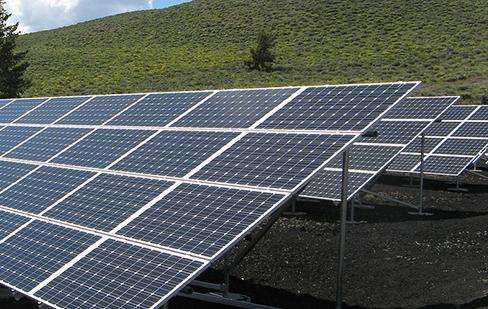Beautiful appearance, light weight and high solar energy conversion rate.
According to the Doc Baba website, the solar cell is made of a new type of perovskite crystal island composite film, which has the characteristics of photoelectric conversion efficiency high and translucency, so the advantages of Gray solar cells are beautiful appearance, light weight and high solar energy conversion rate.
Solar cells, also known as solar chips or photovoltaic cells, are optoelectronic semiconductor sheets that use sunlight to directly generate electricity.
Organic solar cells have more advantages. Among the various technologies used by humans to use solar energy, solar cells, that is, devices that use the "photovoltaic effect" to convert directectly light energy into electrical energy, are currently the most used. A widely used application, it is also one of the most promising technologies. For a long time, people have mainly prepared solar cells based on inorganic materials such as crystalline silicon. However, this type of battery production has disadvantages such as complex process, high cost, high energy consumption and high pollution. The question of whether we can find a new low-cost, high-efficiency, flexible and environmentally friendly organic material to develop new solar cells is now a goal that scientists around the world are striving to achieve. "Using the most abundant carbonaceous materials on earth as basic raw materials and obtaining high-efficiency, low-cost green energy by technical means is of great importanceextremely large lift to solve the major energy problems currently facing humanity," Chen Yongsheng explained. Started in the 1970s, research on organic electronics and organic functional materials (polymers) provides opportunities for the realization
Compared with inorganic semiconductor materials represented by silicon, organic semiconductors have many advantages such as low cost, diversity of materials, adjustable functions and flexible printing preparation. At present, displays based on organic light-emitting diodes (OLEDs) have been produced commercially and are widely used in mobile phone and television displays. Organic solar cells based on polymer materials. organic as a photosensitive active layer have the advantages of various material structuresux, low-cost large-area printing and preparation, flexibility, translucency and even full transparency. They have many advantages that inorganic solar cell technology does not offer. to have. In addition to being used as a normal power generation device, it also has huge application potential in other fields such as energy-saving building integration, wearable devices, etc., which has aroused great interest in the academic and industrial world. “Especially in recent years, research on organic solar cells has made rapid progress, and the efficiency of photoelectric conversion has been continuously improved. At present, the scientific community generally believes that organic solar cells have reached the "dawn" of commercialization. "Chen Yongsheng said.














